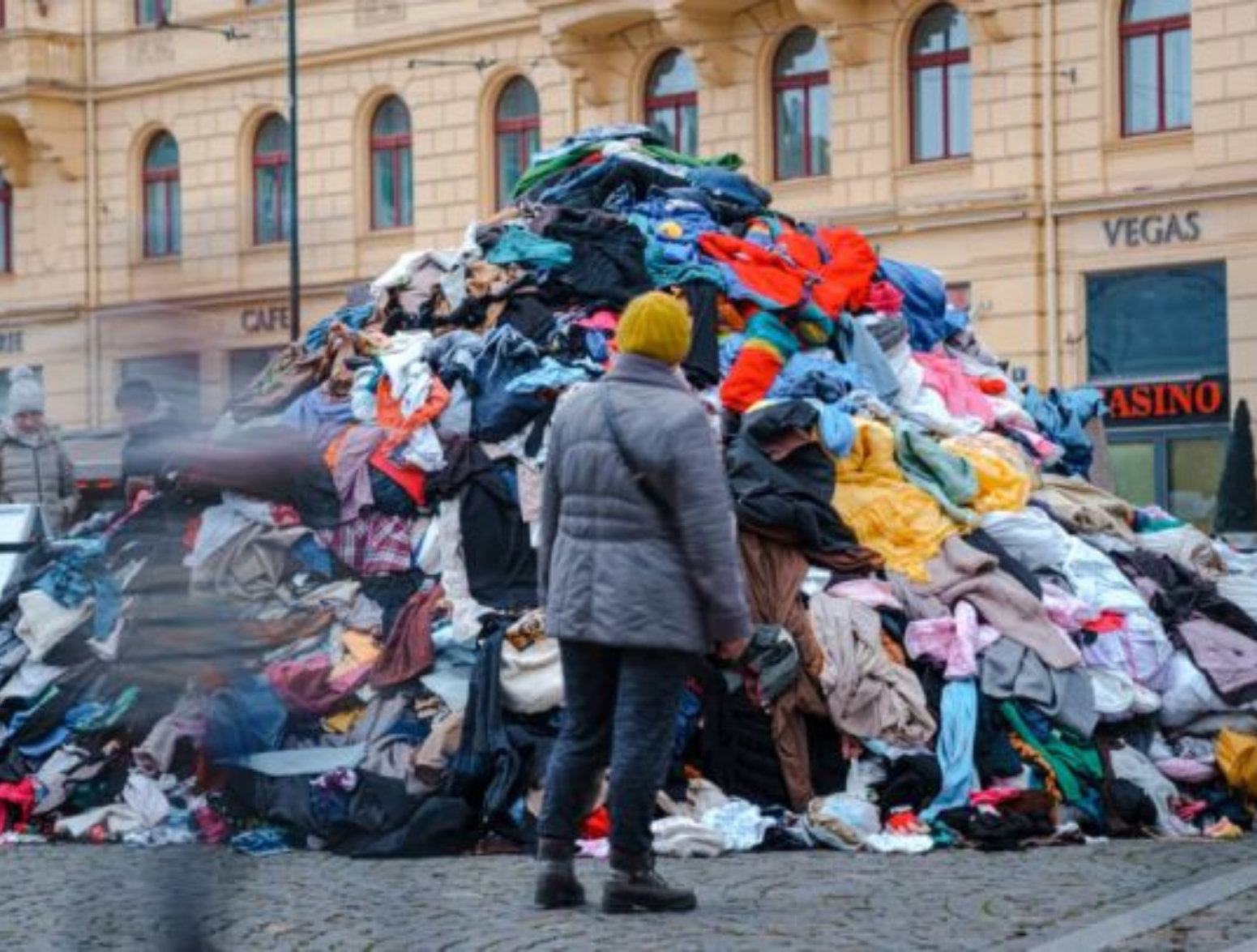A Four-Ton Warning: This massive pile of clothing, displayed in Prague, was erected as a striking visual representation of the textile waste produced by a typical European family over a lifetime. Weighing approximately four tonnes, it symbolizes the growing environmental burden caused by fast fashion and excessive consumption.
2025: A Turning Point for Textile Waste?
Starting in 2025, EU Member States will be required to implement the separate collection of textile waste—a major step under the EU Waste Framework Directive. But does this shift automatically mean a circular economy for textiles?
Not quite.
The Scale of the Problem
According to the European Environment Agency, the average EU citizen generates around 16 kilograms of textile waste per year, of which only 4.4 kilograms are separately collected for reuse or recycling. The remaining 11.6 kilograms typically end up in mixed household waste — often landfilled or incinerated. Multiplied across millions of households and decades, the waste totals become staggering. The Prague installation underscores the urgency to shift toward sustainable consumption patterns, implement effective textile collection, and accelerate the development of a circular textile economy.
A System Under Pressure
The European textile waste industry is already under pressure: sorting facilities face workforce shortages, rising costs, and limited demand for sorted textiles. Without systemic improvements — infrastructure investment, recycling innovation, and stronger markets for secondary raw materials — an increase in collected textiles might not lead to more recycling. Instead, there’s a real risk that separately collected textiles could simply be stockpiled, incinerated, or exported to countries without sufficient waste management infrastructure — undermining the goals of circularity.
From Bottleneck to Breakthrough?
If properly supported, increased collection could boost demand for sorting and recycling, create jobs, and foster innovation. But without policy alignment and strategic investments, collection alone risks becoming a well-intentioned bottleneck, not a breakthrough.
Circularity Needs More Than a Bin
While separate collection is a critical enabler, circularity depends on what happens after collection: investment in recycling infrastructure, advanced sorting technologies, and functioning markets for recycled fibers. Today, only about 22% of textile waste is separately collected, and less than 1% is recycled into new clothing. Separate collection is a necessary first step — but it’s just that: a start. Without parallel investments in systems for reuse, refurbishment, and recycling, the opportunity for meaningful change may be lost. Circularity requires more than placing clothes in the right bin — it demands coordinated action across the entire value chain.
Final Thought
This policy shift opens the door. The question now is: Will we build the system needed to walk through it? What’s your take on the Separate Collection of Textiles?




